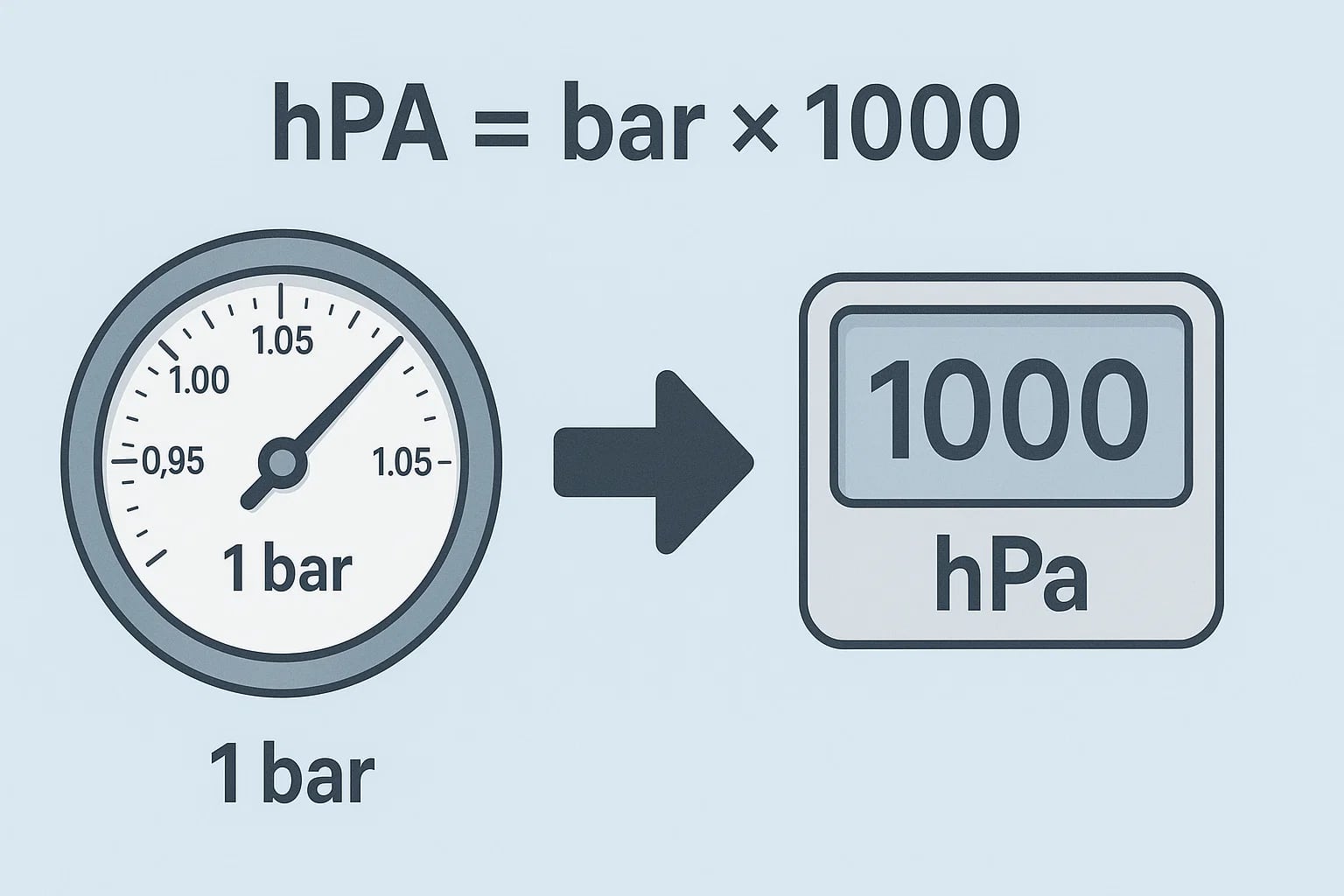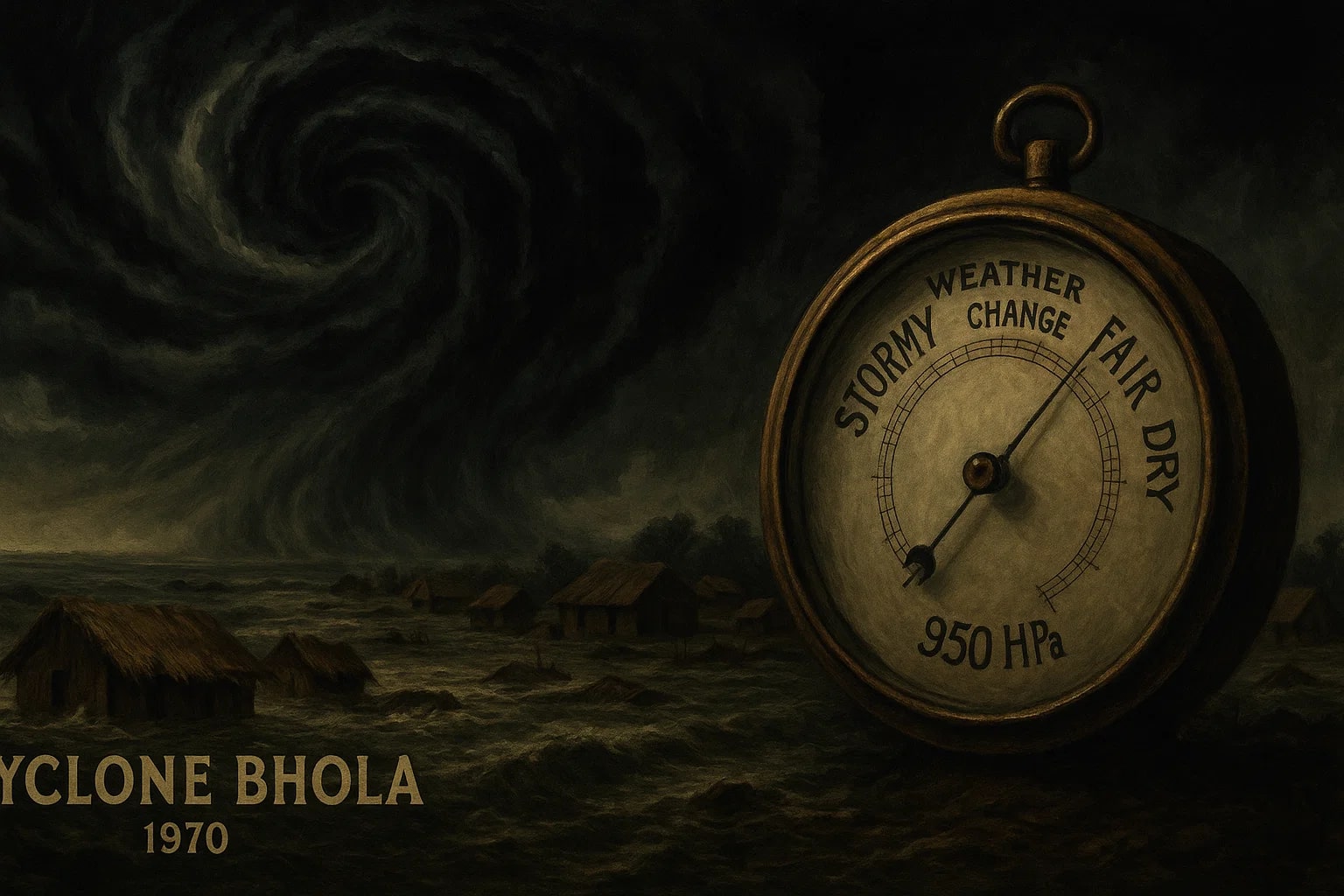bar to hectopascal (bar to hPa) - How to convert bar to hPa
Converting bar to hectopascal may sound technical, but it’s a common task in science, engineering, and meteorology. Pressure measurements shape everything from weather forecasts to industrial safety checks, so precision matters. With Jetcalculator’s conversion tool, turning bar into hectopascal (hPa) is fast and simple.
What is a bar?
The bar is a unit of pressure introduced in the early 20th century by the Norwegian meteorologist Vilhelm Bjerknes. It represents 100,000 pascals, close to the average atmospheric pressure at sea level. While not an SI unit, the bar is widely used in meteorology, oceanography, and engineering. For example, tire pressure gauges and scuba diving regulators often display readings in bar.
What is a hectopascal (hPa)?
The hectopascal (hPa) is equal to 100 pascals. It is the standard pressure unit in meteorology, making weather maps easier to read. Instead of writing 101,325 Pa, meteorologists often write 1013 hPa. This smaller, practical unit is particularly common in European and Asian weather reports, where atmospheric pressure is almost always given in hPa.
Conversion formula: bar to hPa
The relationship between the two is straightforward:
-
1 bar = 1000 hPa -
hPa = bar × 1000 -
bar = hPa ÷ 1000
For example, 1.2 bar = 1.2 × 1000 = 1200 hPa.

Did you know?
-
In aviation, cabin pressure is typically maintained around 750 hPa, which mimics the atmosphere at about 2,500 meters altitude. This balance keeps passengers comfortable while reducing aircraft stress.
-
The bar was once more common in meteorology, but by the 1980s most weather services officially shifted to hPa, aligning with SI standards and simplifying data exchange.
-
In literature, Jules Verne’s classic Twenty Thousand Leagues Under the Seas describes diving adventures where water pressure increases rapidly with depth. At 10 meters, the pressure rises by roughly 0.1 bar, or 100 hPa, per additional depth.
From storm warnings to science history
One of the most famous uses of pressure measurement happened in 1970 during Cyclone Bhola in East Pakistan (now Bangladesh). Meteorologists tracked atmospheric pressure dropping below 950 hPa, signaling the storm’s severity. Unfortunately, communication failures and limited forecasting tools meant millions were unprepared. The cyclone caused catastrophic flooding and is remembered as one of the deadliest natural disasters of the 20th century. This tragic event later inspired advancements in meteorological equipment and data-sharing systems worldwide. Today, bar and hPa readings play a vital role in issuing timely storm warnings, saving countless lives.
Essential converters for everyday precision
If you often work with pressure values, the dedicated Pressure Converter is the most convenient option for quick and accurate calculations. You can also explore the full Conversion Tools, which covers length, volume, temperature, and more. These tools ensure you always have the right numbers at your fingertips—no matter the field.

Turning numbers into real-world impact
The conversion from bar to hPa is simple—multiply by 1000—but its applications are profound. From pilots monitoring cabin conditions to meteorologists forecasting storms, this small mathematical link connects science with everyday life. Whether you’re solving engineering problems or just curious about weather data, Jetcalculator makes the process fast, accurate, and reliable.

